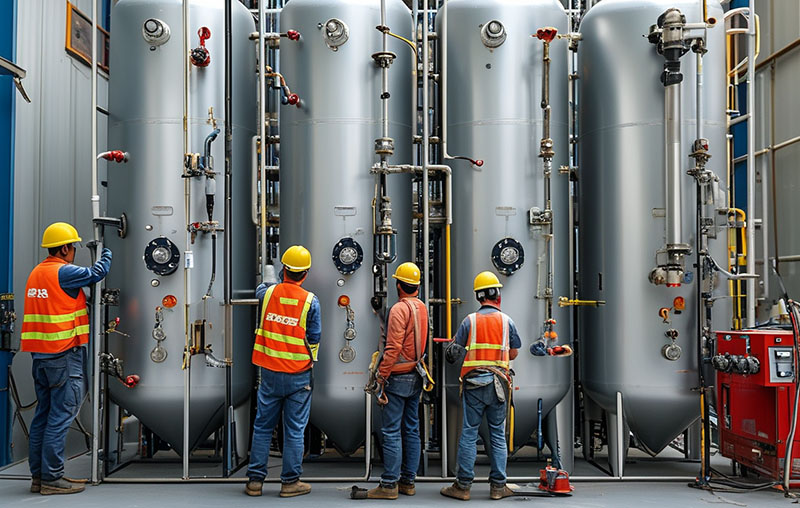As a mechanical device, the installation process of a PSA nitrogen generator is not complicated, and the time required for installation is relatively short. For non-skid-mounted PSA nitrogen systems, the installation typically takes a few days to a week. For skid-mounted equipment, the time required is even shorter.
The installation of a complete PSA nitrogen system includes several steps: preparation, pipeline connection, electrical wiring, equipment debugging, and final acceptance and training.
1. Preparation
Site Selection and Positioning: A specialist will visit the site to confirm that the current location meets the installation requirements for the PSA nitrogen generator, ensuring the area has the necessary power supply, gas source, and ventilation.
Equipment Inspection: Once the equipment is delivered to the designated location, all components of the PSA nitrogen generator are thoroughly inspected to ensure there are no missing or damaged parts and that the equipment model matches the required specifications. After confirmation, the equipment is connected to local infrastructure, primarily the power supply and nitrogen gas source.
2. Pipeline Connection
Check the system pipelines for leaks. Ensure proper pipeline connections so that the air compressor can smoothly deliver compressed air into the pressure swing adsorption (PSA) tanks. Additionally, increase the air pressure of the compressor to meet the required adsorption pressure.
3. Electrical Wiring
According to the equipment manual, correctly connect the power supply, control circuits, and sensor wiring. Avoid mechanical damage and electrical faults, ensuring all cables and terminals are secure and comply with electrical safety standards.
4. Equipment Debugging
Although the equipment is typically debugged and tested before leaving the factory, it is necessary to perform these steps again on-site to better adapt to local infrastructure and environmental conditions. The supplier's technical personnel must ensure stable power supply and voltage levels that meet the equipment's requirements. They should also check all connections for tightness and ensure all valves and instruments are functioning properly. This includes leak testing and functional testing. Additionally, the supplier's technicians will adjust pressure settings, inspect the adsorbent condition, and optimize system performance on-site. The ultimate goal is to ensure the nitrogen generator achieves optimal performance under actual working conditions.
5. Acceptance and Training
Appearance and Performance Acceptance: Conduct a final inspection of the equipment's appearance and performance to ensure all functions and parameters are normal.
Operational Training: Provide detailed training to operators to ensure they are familiar with the equipment's structure and operational procedures. The training should cover daily operations, maintenance, troubleshooting, and safety precautions.
For skid-mounted PSA nitrogen generators, the installation process is more straightforward. Although skid-mounted systems are designed for "plug-and-play" convenience, some necessary installation and debugging steps are still required to ensure proper operation and safety. However, the overall time required is significantly reduced.
In summary, the installation of a PSA nitrogen generator, from site selection to pipeline and electrical connections, is not complicated. As long as the equipment is delivered normally, it can be put into use quickly.


